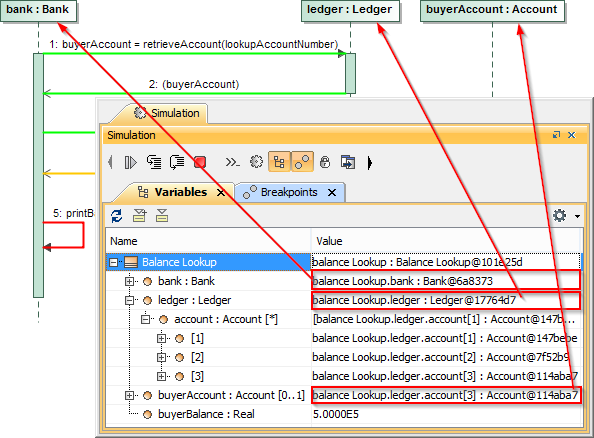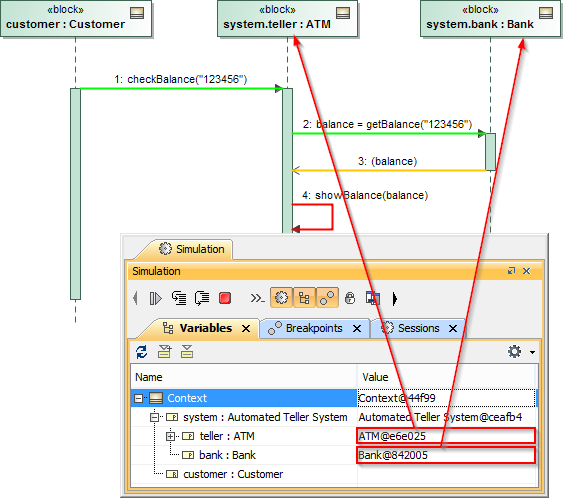On this page
You can use a lifeline in a Sequence diagram to represent a property owned by a Class or a block that is the context of the diagram. Sending messages between objects specifying the properties presented by the lifelines can occur. Cameo Simulation Toolkit uses lifelines to find a source and a target object of the message.
Simulation console showing how lifelines can be used to find the source and target of a message.
You can use a lifeline in a SysML project to represent a nested property of a Class or a block, which is the context of a diagram. A path to the nested property appears as a dot notation on the lifeline symbol. Cameo Simulation Toolkit uses the path on the lifeline symbol to find the object.
Note
Cameo Simulation Toolkit uses a lifeline with a dot notation to represent a nested property when you record a simulation as a Sequence diagram. See Recording a Simulation as a Sequence Diagram for more information about recording a simulation.
Simulation console showing how a lifeline with a dot notation can represent a nested property.
Lifeline selector
If a lifeline represents a part with the multiplicity of more than 1 (neither * nor 1..*), the list will also contain more than one object (not only one object) at runtime. The lifeline has the Selector expression that specifies the particular part represented by the lifeline.
Cameo Simulation Toolkit supports the lifeline selector which allows specifying an exact object from the Selector expression. The Selector expression will be evaluated as an index integer to get an Object from the object collection.
The ledger[3] object is selected according to the index integer of lifeline Selector 3 of the Ledger object.
If the selector of a receiver is invalid or cannot be evaluated as an index integer, e.g., "X", none of the objects will be used, and a warning message will display in the simulation console.

